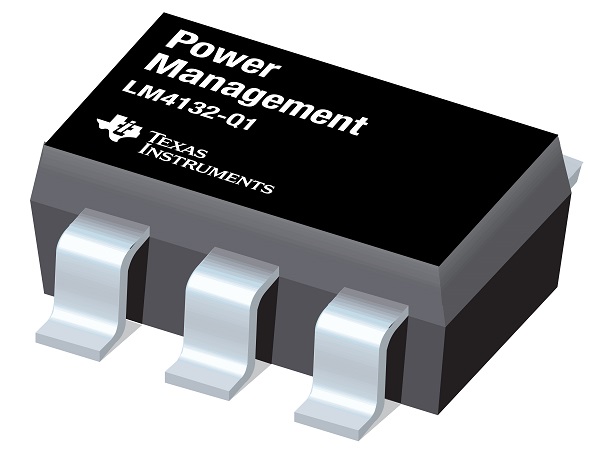This post is sponsored by Texas Instruments
Texas Instruments has achieved yet another breakthrough: the company’s LM4132 family of precision voltage references performs similar to the industry’s best laser-trimmed bipolar references, but does so using cost-effective CMOS technology.
 The way in which TI was able to do this was by using EEPROM registers for correction of curvature, tempco, and accuracy on a CMOS bandgap architecture that allows package level programming to overcome assembly shift. For those unfamiliar, this is a unique approach that offers a solution to the limitations that come with laser techniques; namely the limitation of shifts in voltage accuracy and tempco during assembly of die into plastic packages.
The way in which TI was able to do this was by using EEPROM registers for correction of curvature, tempco, and accuracy on a CMOS bandgap architecture that allows package level programming to overcome assembly shift. For those unfamiliar, this is a unique approach that offers a solution to the limitations that come with laser techniques; namely the limitation of shifts in voltage accuracy and tempco during assembly of die into plastic packages.
The LM4132 is able to deliver up to 20mA and doesn’t require an output capacitor of buffer amplifier. These unique design features, coupled with its SOT23 packaging make it an ideal solution for space-critical applications.
Another advantage worth pointing out is the series’ references provide today’s design engineers with lower power consumption options than shunt references; this is because they do not have to idle the max possible load current under no load conditions. This, along with its low dropout voltage (400mV) make the LM4132 ideal for battery-powered solutions.
If you’re interested in the LM4132, do note that it is available in five grades (A, B, C, D and E) to maximize flexibility. The best grade devices (A) have an initial accuracy of 0.05% with a specified temperature coefficient of 10ppm/°C or less; the lowest grade parts (E) have an initial accuracy of 0.5% and a tempco of 30ppm/°C.
For more information about this product, click here.
To request a sample, click here.
To download a datasheet, click here. To buy now at Mouser, click here.
To buy now at Mouser, click here.
Advertisement
Learn more about Texas Instruments





